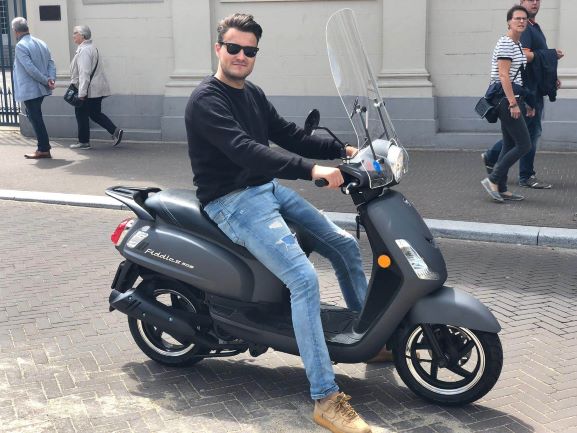In the cities of Amsterdam, The Hague, Rotterdam and Utrecht, four percent of scooters are not third party insured and are therefore contrary to the law.
The number of scooters driving around without insurance in the four largest cities in the Netherlands, Amsterdam, The Hague, Rotterdam and Utrecht, is disturbingly high, with an average of four percent. This is evident from recent research by the action group Scootervrij, which is committed to safer cities without nuisance from scooters. The findings indicate significant differences between the cities, with Amsterdam having the highest percentage of uninsured scooters at six percent. These figures are worrying not only because of the conflict with Dutch legislation that requires third party liability insurance for all motor vehicles, but also because scooters are involved in a disproportionately high number of traffic accidents.
Third party insurance covers property and personal injury caused by the driver, and its absence can have serious financial consequences for accident victims. Despite the fact that scooters cover only 0,7 percent of all kilometers driven by motor vehicles in the Netherlands, they are involved in approximately one in eight traffic accidents. This underlines the importance of mandatory third party liability insurance.
The action group Scootervrij has a burn letter sent to outgoing Minister Harbers of Infrastructure and Water Management, in which they advocate stricter measures against offenders. The current situation, where it is cheaper for many scooter owners to pay a fine for lack of insurance than the insurance premium itself, is considered unsustainable. This problem is particularly prevalent among young scooter owners in large cities.

The legal obligation to take out third party liability insurance is systematically violated by scooter owners. There are tens of thousands of uninsured scooters in the Netherlands.
Furthermore, it appears from the research from Scootervrij that mopeds (maximum 25 km/h) are more often uninsured than mopeds (maximum 45 km/h), with Amsterdam as an outlier where nine percent of mopeds are uninsured. Collin Molenaar of Scootervrij emphasizes the seriousness of the situation by pointing out the "gigantic numbers" of uninsured mopeds that drive around in Amsterdam alone, more than two thousand.
The research method involved checking more than 1400 scooters in the four largest cities via the RDW license plate check, which shows whether a vehicle is insured. In addition to uninsured scooters, Scootervrij also came across scooters without license plates, scooters with false license plates and stolen scooters. These findings highlight the need for stricter enforcement and higher fines to reduce the number of uninsured scooter riders.
The call for stricter measures and improved enforcement is clear. Without adequate action, the safety of all road users, especially pedestrians and cyclists, remains at risk. The discussion about how to balance mobility freedom and road safety remains relevant as cities grapple with the challenges of uninsured scooters on their roads.




